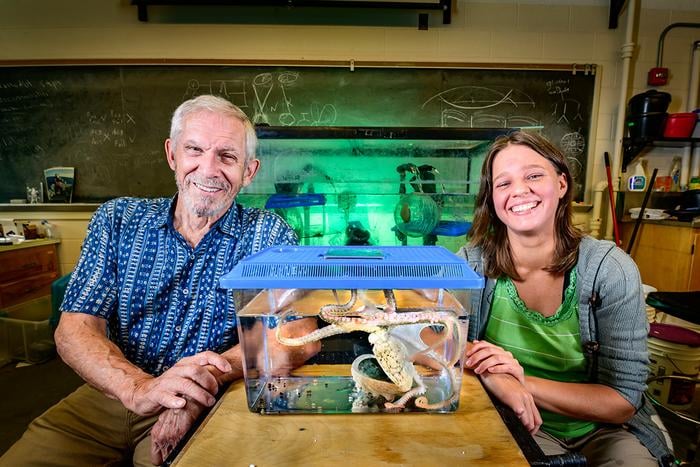Researchers at the University of Illinois Urbana-Champaign have developed a novel artificial intelligence system that can navigate new environments, seek rewards, and learn in real-time – much like animals do. The AI, dubbed ‘CyberOctopus’, combines the simple learning mechanisms of a sea slug with the more advanced memory capabilities of an octopus.
This innovative approach, detailed in the journal Neurocomputing, gives AI the ability to explore and gather information to expand its awareness, growing its knowledge base while learning on the job. The system could lead to more efficient and adaptable AI that doesn’t require extensive pre-training.
From Sea Slug to Octopus: Building a More Animal-like AI
The research team, led by postdoctoral researcher Ekaterina Gribkova and molecular and integrative physiology professor emeritus Rhanor Gillette, built on their previous work simulating the decision-making neural circuits of a sea slug. They named their simulated creature ASIMOV, after science fiction writer Isaac Asimov.
“This essentially makes our artificial intelligence much more animal-like than current artificial intelligences,” Gribkova said. “We are learning how to go from something like the memory of a sea slug, which is very, very simple, to something like us.”
ASIMOV was programmed to monitor its own internal state and seek satiation and reward. It could learn through trial and error, selecting nutritious food items over noxious ones. However, ASIMOV’s memory and ability to integrate information from past experiences were limited.
To address this, the researchers added a computational module for episodic memory, called the Feature Association Matrix (FAM). This module was modeled on the architecture and functions of the hippocampus, a brain region essential to learning and memory. The resulting ASIMOV-FAM agent was dubbed “CyberOctopus”.
Exploring, Learning, and Adapting in Real-Time
In their study, ASIMOV-FAM explored a simulated environment with various landmarks, some of which had rewards attached. The AI was programmed to seek out novelty and rewards, using cognitive maps formed by the FAM to learn its spatial environment.
“The ASIMOV agent uses cognitive maps formed by the FAM to learn its spatial environment,” Gillette explained. “It can generate new paths and shortcuts for traversing the environment more efficiently, for greater rewards. This is effectively spatial reasoning.”
The researchers believe this approach can be adapted for more abstract, non-spatial applications. They suggest it could potentially enhance large language models like ChatGPT, making them more efficient and reducing their size and training requirements.
“We’re thinking that if we can do more of a bottom-up approach, we can build an AI that doesn’t require all that much data, that’s a lot more animal-like in its adaptive behavior and creativity and that is learning more on its own,” Gribkova said. “In essence, we see advanced AI as learning much more like a child would learn.”
This research represents a significant step towards creating AI systems that can learn and adapt more like biological organisms. As AI continues to evolve, approaches like ‘CyberOctopus’ could lead to more flexible, efficient, and truly intelligent systems capable of navigating complex, real-world environments.


